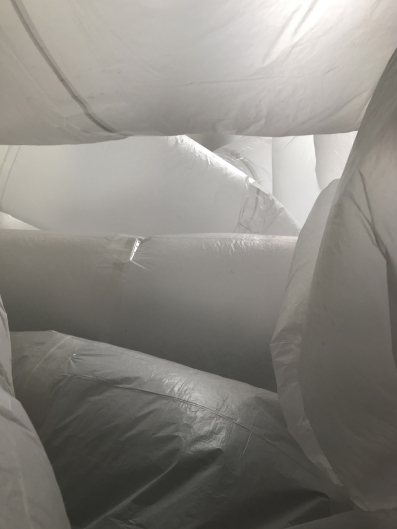
PART I
104 plastic bags.
Electrical air controlled system. Sound.
Amsterdam collects trash 2 times a week.
52 weeks a year.
Do you remember of what you trashed this year?
It is the air of the space but visible. Is there a danger? Can you hear the space breathing ? A small structure with a lot of empty space.
Gerrit Rietveld academie 2023 – may
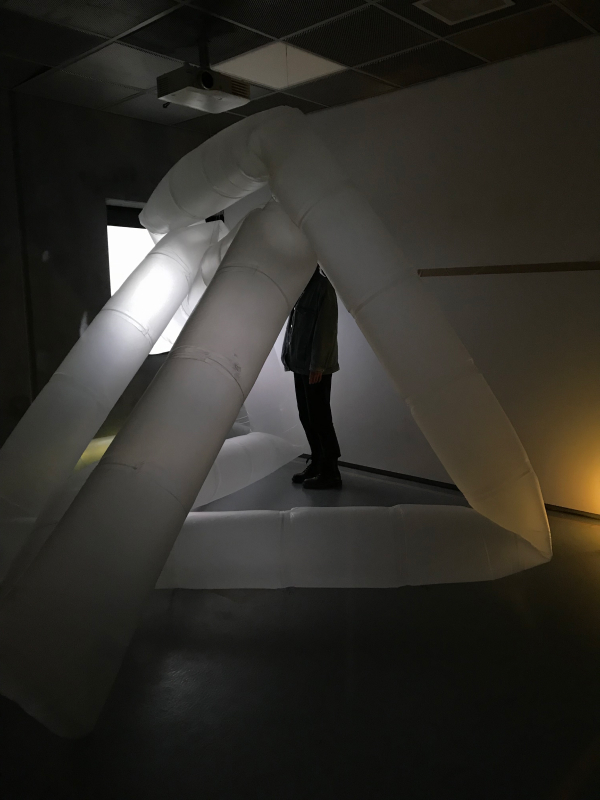
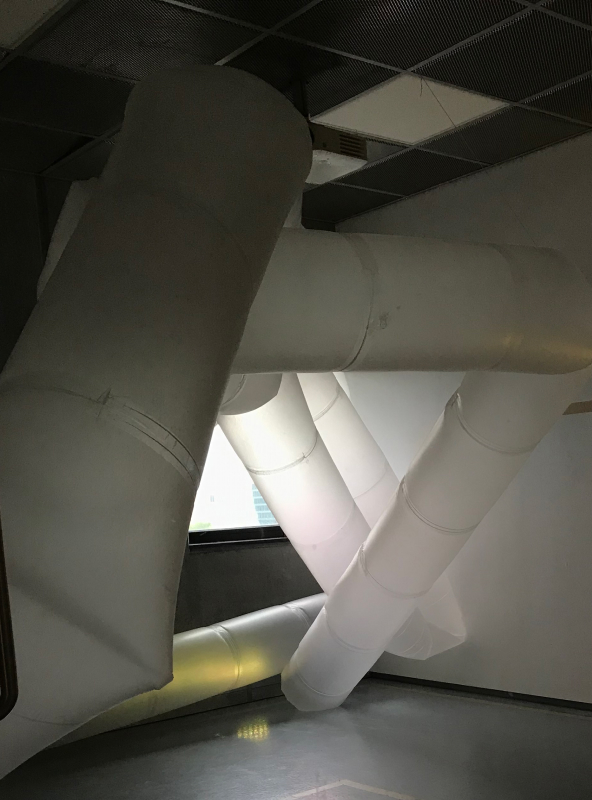
Destruction – fast deconstruction
Trashbags and air as a medium.
Could trash bags challenges conventional notions of beauty and material value, expanding the boundaries of what can be considered art ?
Away from the only statement of environmental awareness, trash bags and air as a medium is call for destruction of the white cubed fine art.
Being part of the space. Erasing the space with its usage.
Emancipated spectator.
Disposable heritage.
The space is now more visibly living. The trash-bags are breathing. The movement is subtile, like someone’s chest when sleeping. This calm appearance is a call to break its structure. To disrupt the hypnotic loop. A remote controlled pump inflate brutally the structure make it moving thought the space and progressively filling it up.
PART II
06 June 2023
A text written with very small letters is glued to the wall in a way that in order to read, a movement is needed, some energy. The proposed way is to disrupt the installation by going through it. A remote with max inflate to explode button is at the disposal of the audience.
A bird net is used to constraint the installation.
The public is pushed to be in a sort of vitrine. The public becomes the interest point of the public creating a new narrative loop sustained by the energy of the installation.
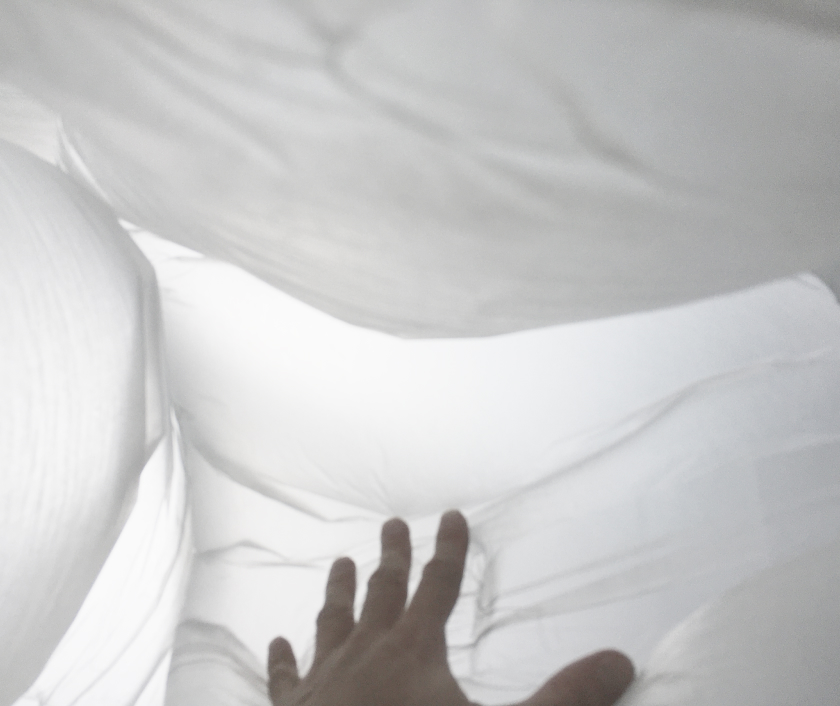
“To speak of the pensive image is to signal the existence of a zone of indeterminacy between these two types of image. It is to speak of a zone of indeterminacy between thought and non-thought, activity and passivity, but also between art and non-art.” [1]
After some tests with the first version of the installation, I focused on its pensive quality. The usage of trash bags, the dynamic of air as a medium are the two processes involved in this approach to embodies this indeterminacy. I follow the path, exposing the source of creation. An ambivalent installation, partly autonomous and partly controlled.
I tried to express this quality at different angles of view that the public could easily take.
This part of my work is deeply linked to my previous interaction with art. The feeling of being able to achieve the work by yourself and get a learning at the same time, a reflexion, a refreshing mental breeze, to a complete dissolution of the ego.
This pensive image can be the gate to a unified feeling of the life experience, an embodiment of the whole.
the controlled aspect of the installation, where inflation goes beyond the usual autonomous limits and may potentially evoke a sense of attack for someone within the trash bags, adds a heightened level of tension and confrontation. I try to prompts viewers to critically reflect on their own relationship with the artwork and the wider societal context in which it exists. It challenges viewers to critically engage with their own vulnerabilities and the power dynamics engaged.
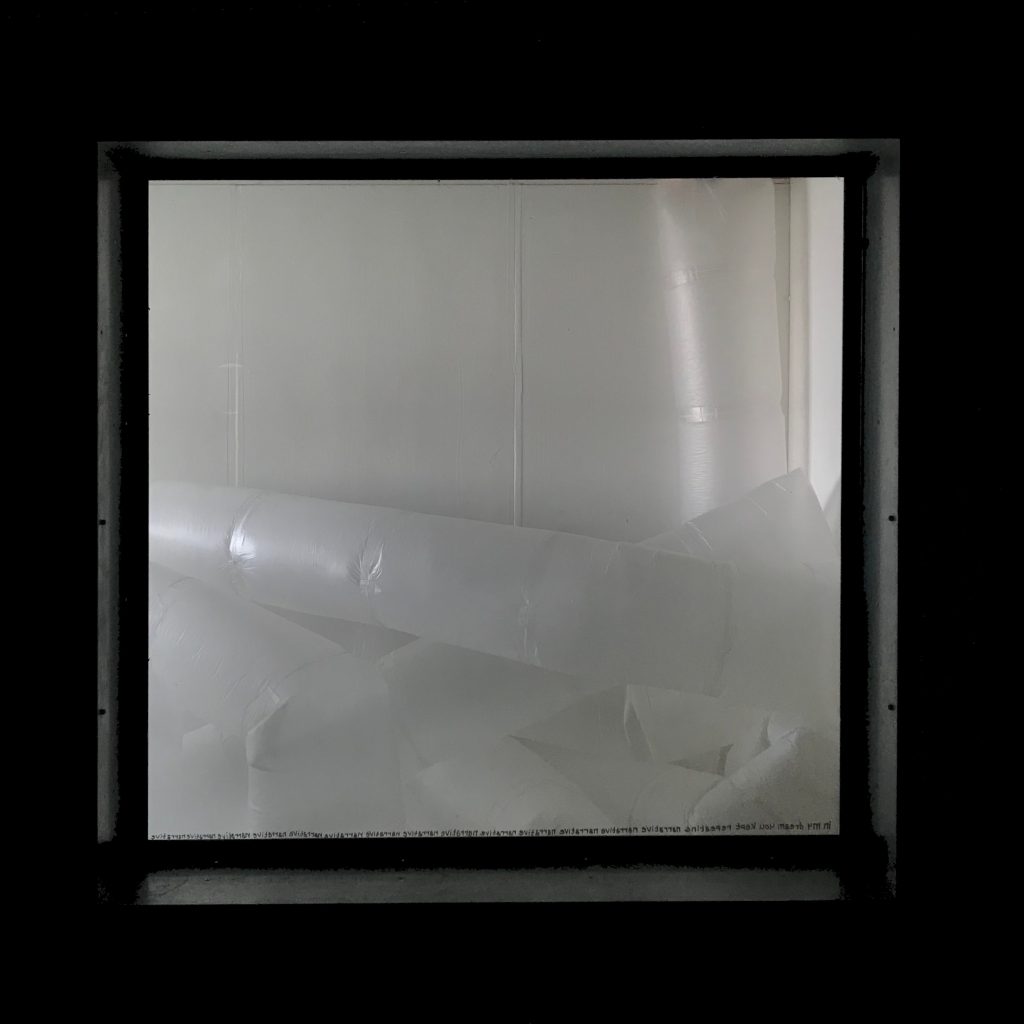
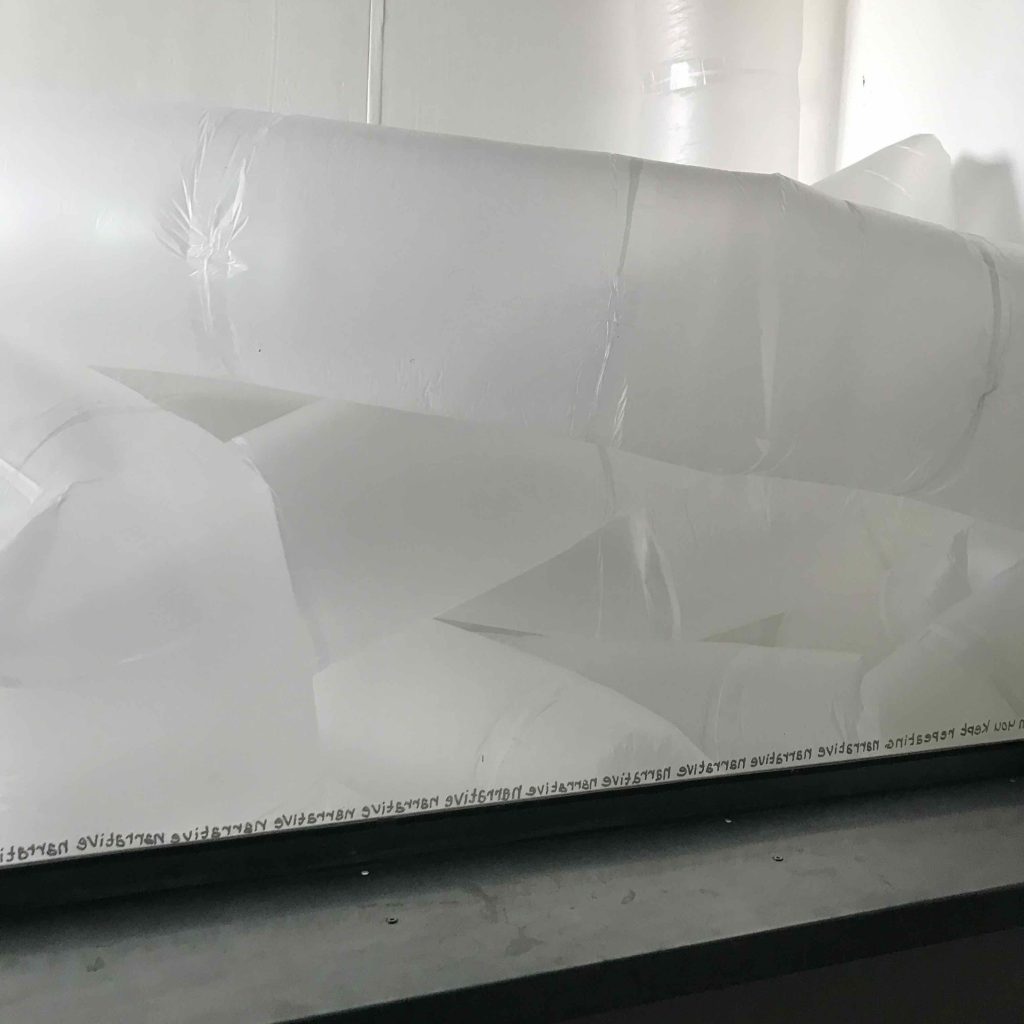
As Andrew Pickering notices, the primary layer goal of his book we could see the installation as mean to wash your environmental preoccupation by having thought of it. Or the layer of consumerism that extend with the first idea.
Which already gather us to what Andrew Picking refer as “”another future””. The double quote is because himself uses it.
We come back to the pensive image of Ranciere and the ability to propose
‘that these scenes from the history of cybernetics can function as open-ended models for future practice, and that they can help to make an endless and quite unpredictable list of future projects imaginable.” [3]
This autonomous and nomad inflated installation is one of my step in the path to deepen theses futures. As much as this installation is a process between me as an artist and my teachers and classmates public.
[1] . Excerpt From: Jacques Ranciere. “The Emancipated Spectator.” eBook. p207 ISBN-13: 978-1-84467-343-8
[2] [3]. Excerpt From: ANDREW PICKERING. “THE CYBERNETIC BRAIN” p390 ISBN-10: 0-226-66789-8